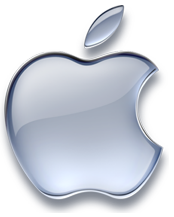There has been a lot written about Apple and many attempts to “look behind the curtain.” A recent Fortune magazine article (May 23, 2011 ) discussed what could be the best insight into this secretive company. One thing for sure, is that Apple is an amazingly nimble company for its size. Apple started off in the personal computer industry back in the late 70’s with the Apple 2 and has gone through many ups and downs over the last 30 years. But one thing is clear, in recent years, they have gotten their design “mojo” back.
Here is a summary of the main points in the Fortune article:
- Fascination with elegant design and simplicity
- It is not what they work on but what they don’t work on
- Personal accountability is key to the culture of delivery
- Long-term focus allows “out-of-the-box” ideas to percolate
Simple concepts turned into elegant and user friendly products. Look at the iPod. What really is the product concept? Portable music. Apple revolutionized how users could organize their music with the iTunes software. Remember when your music collection was scattered around on CD’s or if you’re old enough, remember the progression from vinyl records, to 8 track cassettes, then to the mini cassettes. Now with a simple click you can organize all your songs into a simple to use library. How simple is it to update your iPod? Simply plug it into your computer and it updates automatically.
The other hallmark of Apple products is the continual product line extensions. The first iPod has a small hard disc drive and over several product iterations, the current generation of iPods can store as many or more songs (and now videos) on a solid state drive, but the basic interface is unchanged.
More thoughts on simplicity. The iPhone was portable communications that dazzled customers with the innovative touch screen. The iPad is portable information. Note that each of these has a very specific function at a high level, but the key is in the design and user interface. Apple also leverages software platforms over many of their product lines. Having robust product platforms is a key to profitable innovation.
What are some lessons learned for the product innovation community? In many cases of very successful innovation, ignoring or challenging the status quo or conventional wisdom was a big part of the innovative process. Another aspect is in large part not listening to customers. Now I don’t mean not listening to customers for product improvements, line extensions, fixing issues, etc. This is just good business. Here I am talking about having a process and long term focus to enable “out-of-the-box” products. For your company this may not be new to the world new products (by the way, the iPod was not the first mp3 player), but might include new products that are new to your business or new to your industry.


Leave a Reply